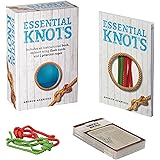Have you ever wondered about the ingenious building techniques employed by our ancestors, using only natural materials found in their immediate environment? The captivating video above provides a silent, yet powerful, demonstration of constructing a wattle and daub hut, showcasing a method that has stood the test of time for millennia. This ancient construction technique, which is surprisingly effective, leverages the earth’s bounty to create durable and sustainable shelters.
It is fascinating to observe the intricate process involved, from gathering materials to assembling the final structure. This method, known as wattle and daub, is considered a cornerstone of primitive technology, demonstrating remarkable ingenuity. The visual journey presented in the video is a testament to human resourcefulness and the enduring power of natural building principles.
Understanding Wattle and Daub: An Enduring Primitive Building Method
Wattle and daub is a composite building material that has been utilized for constructing walls and buildings since the Neolithic period. Essentially, this system involves weaving thin sticks or reeds, referred to as “wattle,” into a lattice-like structure. Subsequently, this framework is covered with a mixture of wet soil, clay, sand, straw, and sometimes animal dung, which is known as “daub.”
The widespread application of wattle and daub construction across various cultures and continents highlights its fundamental effectiveness. Historically, shelters and homes were commonly erected using this accessible and robust technique. Furthermore, it represents a remarkable example of sustainable building, long before the term was even coined, due to its reliance on readily available local resources.
The Core Materials: Nature’s Toolkit for Your Wattle and Daub Hut
The beauty of building a wattle and daub hut lies in the simplicity and availability of its constituent materials. Fundamentally, everything needed can often be sourced directly from the natural environment, emphasizing its eco-friendly nature. This reliance on local resources significantly reduces the environmental impact of construction projects.
Wattle: The Skeletal Framework
The wattle component primarily consists of slender, flexible branches or saplings. These are typically harvested from trees such as willow, hazel, ash, or even bamboo, depending on regional availability. These branches are utilized for their pliability, which allows them to be interwoven effectively to form a strong, stable framework.
The branches are interwoven around sturdy vertical posts, creating a dense mesh that provides the necessary structural support for the daub. This intricate weaving process, as observed in the video, is crucial for the overall integrity of the wall. Consequently, a strong and resilient base is established, ready for the next stage of construction.
Daub: The Earthen Infill
The daub mixture is an earthen plaster crafted from a combination of several key ingredients. Predominantly, it includes clay, which acts as a binder, providing cohesive strength to the mixture. Sand is incorporated to prevent cracking as the daub dries, ensuring greater stability and durability.
Additionally, straw or other fibrous materials are added to the daub, functioning as a natural reinforcement. These fibers contribute tensile strength, preventing the daub from falling apart and providing insulation. The precise ratio of these components is often adjusted based on local soil conditions and traditional knowledge, showcasing adaptive primitive building practices.
Constructing the Framework: The Wattle Weaving Process
The initial step in building a wattle and daub hut involves the establishment of a robust foundation and a vertical support structure. Sturdy posts are securely embedded into the ground, forming the primary skeletal framework of the hut. The stability of these main posts is paramount for the entire structure’s longevity.
Once the vertical posts are in place, horizontal members are often added to provide additional rigidity and a base for weaving. Subsequently, the flexible wattle branches are systematically woven between these upright posts, creating a dense, basket-like mesh. This intricate weaving technique, visible in the video, is what provides the primary surface for the daub application.
Crafting the Daub: The Earthen Mixture Preparation
Preparing the daub is an essential stage in the construction of a wattle and daub hut, requiring careful mixing to achieve the correct consistency. This process traditionally involves soaking clay-rich soil with water, often over several days, to allow the clay to fully hydrate. The video implicitly shows the physical labor involved in this mixing, often done by foot.
Furthermore, sand and straw are thoroughly incorporated into the wetted clay mixture. The goal is to create a homogenous paste that is pliable enough to be pressed into the wattle framework, yet stiff enough to hold its form. The quality of the daub directly impacts the strength and insulating properties of the finished walls, underscoring the importance of proper preparation.
Applying the Daub: Securing the Structure
Once the wattle framework is complete and the daub mixture is ready, the application process begins. The daub is manually pressed firmly onto and into the woven wattle framework, ensuring it fills all gaps and completely encases the branches. This technique requires considerable effort and attention to detail to achieve optimal adhesion and coverage.
Multiple layers of daub may be applied, allowing each layer to partially dry before the next is added. This incremental application helps to prevent cracking and ensures a stronger, more even wall surface. The final layer is often smoothed to create a finished aesthetic, contributing to both the durability and appearance of the wattle and daub hut.
The Advantages of Wattle and Daub Construction
The continued relevance of wattle and daub construction is attributable to a range of significant benefits. Firstly, the materials required are typically abundant and locally sourced, minimizing transportation costs and environmental impact. This makes it an incredibly sustainable choice for building, even in modern contexts.
Secondly, wattle and daub walls possess excellent thermal mass properties, meaning they can absorb and store heat during the day and slowly release it at night. Consequently, the interior temperatures are regulated, creating a comfortable living environment with less need for external heating or cooling. This natural insulation is a distinct advantage.
Moreover, the construction process of a wattle and daub hut can be surprisingly simple, not requiring specialized tools or highly skilled labor. This accessibility meant that ancient communities could construct their own homes, fostering self-sufficiency. This also makes it an attractive method for DIY enthusiasts today.
Modern Relevance and Sustainable Building Practices
While often considered a primitive technology, wattle and daub is experiencing a resurgence in popularity within the sustainable building movement. Its inherent eco-friendliness and low environmental footprint align perfectly with contemporary desires for green architecture. People are increasingly seeking alternatives to conventional, resource-intensive construction methods.
Modern adaptations of wattle and daub often incorporate engineered foundations and roofing systems for enhanced durability and weather resistance. Nevertheless, the core principles remain unchanged, demonstrating that ancient wisdom still offers valuable solutions for future challenges. The construction of a wattle and daub hut, therefore, is not merely a historical curiosity but a viable option for conscious builders.











